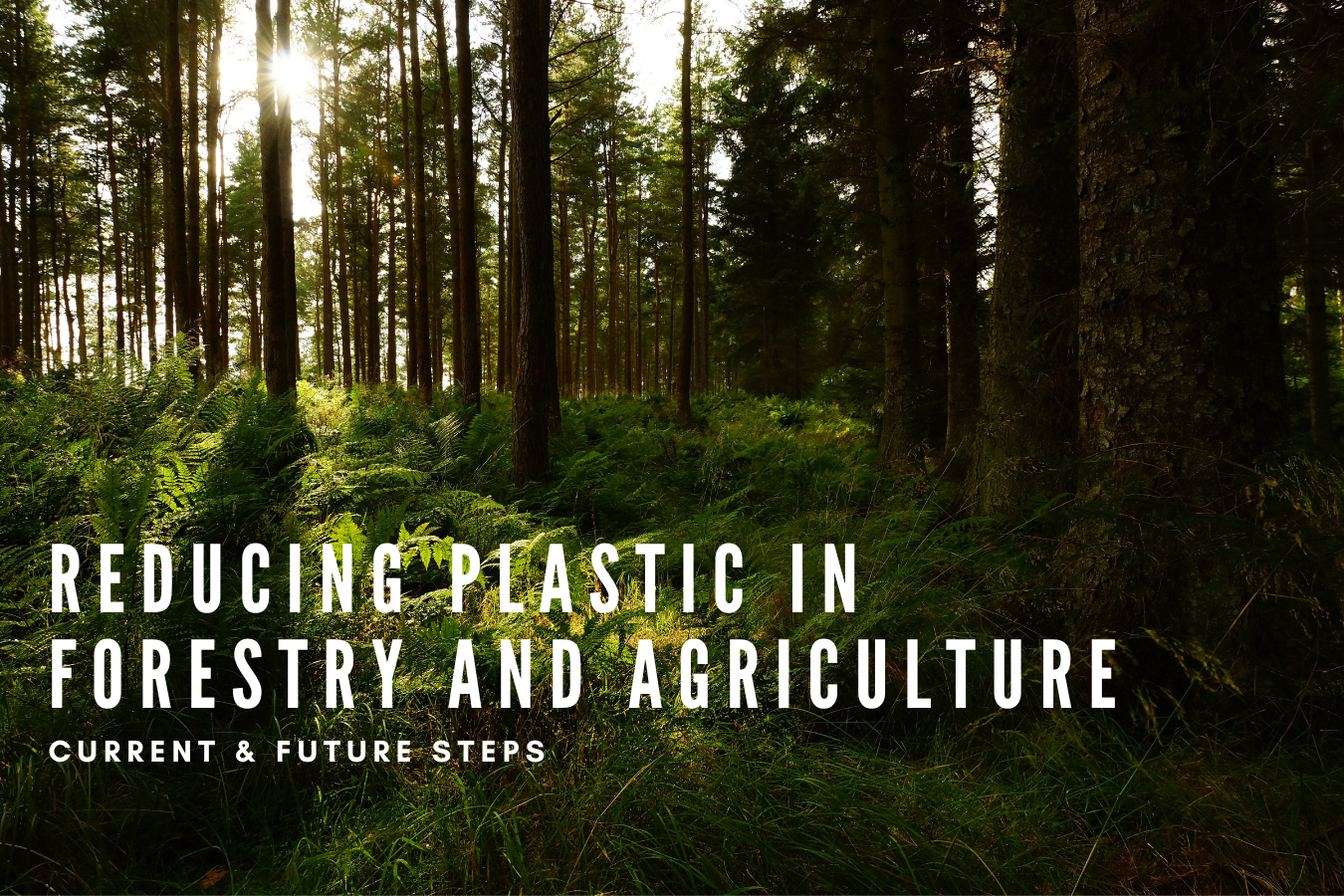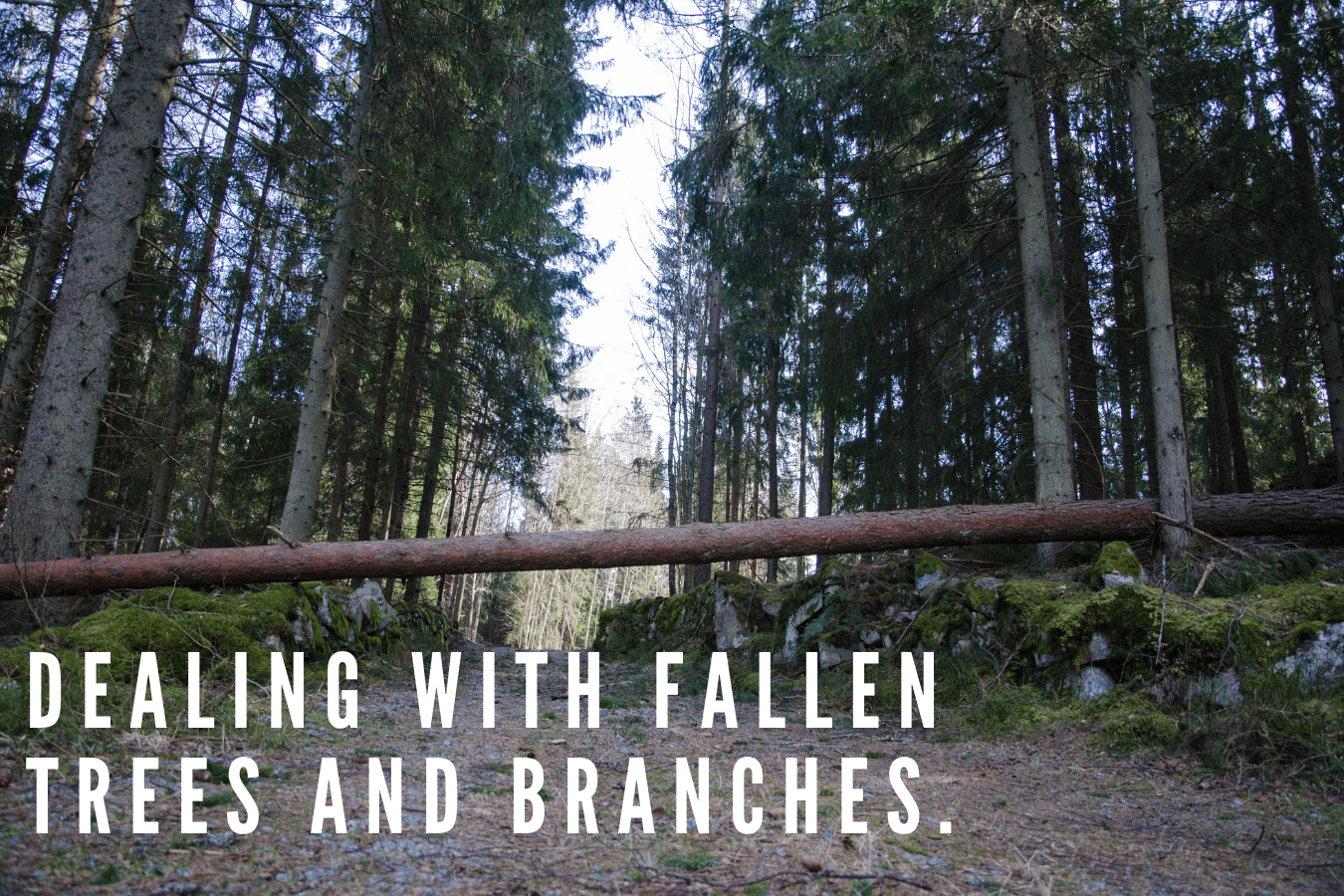
Reducing plastic in Forestry and Agriculture: current and future steps
Sustainability in forestry and agriculture is a topic that is highly important at the moment and continues to be discussed in these industries. These industries have done a lot of work already in terms of re-inventing their processes to become more sustainable.
However, these industries are working hard to reduce their footprint and this includes reducing the use of single-use plastics. Reducing over-reliance on single-use plastics and a more responsible approach, as a society, how we use plastics was one of the topics addressed at the COP26 summit and continues to be tackled within both the Forestry and Agriculture industries.
The Impact of single-use plastics on our environment.
There is no secret that the process of creating and disposing of single-use plastics causes a negative environmental impact. This is due to the gases released from the creation of plastics and the chemicals which are added during the production process. In terms of the disposal process, these plastics take years to decades to break down and a large portion of them end up in our oceans, leading to the corruption of our marine wildlife. When these items do eventually break down, they break up into microplastics, they don’t just go away.
We are all aware of the detrimental effect plastics have on our environment and wildlife but is the total elimination of single-use plastic possible? The answer is currently no, it’s simply unrealistic. We have come a long way in a lot of areas and part of this has been thanks to the use of plastic.
Hospitals are a great example, although they produce a huge portion of waste in plastic, the outcomes from this would be unachievable without it. There are other examples of how simply switching to a non-plastic alternative won’t necessarily lead to a lower environmental impact. Such as if we switched from plastic bottles to glass, according to this interesting article from the BBC, if this were to happen the impact would be more emissions due to the addition of weight in transport. So simple changing to anything other than plastic, or eliminating plastic just isn’t a feasible solution.
A more realistic approach is to begin replacing single-use plastics realistically possible with better, less impactful alternatives and ensure that current-use plastics are disposed of properly, as well as these alternatives. This is another issue highlighted within the BBC’s article, when it comes to switching to bio-based plastics, to make the desired positive impact achievable, we also have to have the infrastructure to support the correct disposal of them.
Reducing Plastics in Forestry.
There are some areas in forestry where they are seeking solutions to remove the use of single-use plastic in practices such as tree planting. Whenever you see an area of newly planted trees, with it you typically find a sea of tree guards. These guards play a huge role in ensuring that the trees are protected during their formative stages from providing a microclimate, to ensuring protection from neighboring animals.
While alternative materials are being trialed, the fact that these guards are in place for a long time in exposed conditions means there is a high criteria to fit. While talks and alternative solutions are currently underway there are ways in which those within the industry are ensuring their use of this plastic is responsible. This includes ensuring that these guards are removed at the appropriate time, recycled correctly, and reused where they can while pushing ahead with alternative material trials.
As well as tree shelters, companies within this industry are also exploring alternative materials for tree bags. Like many other plants, saplings are delivered in plastic bags, this is so they retain moisture during transit. Trials for alternative solutions to these materials are now underway across the sector.
Reducing plastics in Agriculture.
As an industry that both produces plastic waste and is also impacted by its effects, it’s clear to see why those within the agriculture industry are actively working towards more environmental practices and solutions. The FAO has theorized that there may be more plastics in our soil than in our oceans. These microplastics can impact plant production in numerous areas from drainage to soil structure.
Similarly to other industries, there are some uses of plastic within Agriculture that are essential in keeping costs low in the supply chain, elimination of the use of plastics is unfeasible in this sector when the reliance on the product is so high. However, where they can, there have been numerous changes in practices to reduce the use of plastics as well as improve how plastic use and disposal are managed.
Nursery pots. Anyone who has ever worked in a plant nursery or even started growing their plants at home has seen those plastic trays which are typically used. These trays are often flimsy depending on the type you buy and are prone to breaking easily, from there, there is nothing else you can use them for and you have to dispose of them.
Many nurseries have transitioned to the use of fabric pots, not only are these better for the environment in both creation and disposal, but they also have impacts along the supply chain from transport, the reduction in space and weight as well as impacting on the plant’s health and growth.
These pots allow the plants to air prune their roots, resulting in a more robust root system as well as healthier, bigger, and stronger plants. And they are less prone to breaking, these pots can be washed and reused.
Although a large issue within Agriculture and the food chain, in general, is plastic packaging, the responsibility surrounding this is spread across more than just the producers and as this waste is very much in the eye of the consumer, steps are being taken to reduce the use of this, including the use of paper packaging and loose vegetable, etc. Although more intervention is required, this is a very publicly highlighted problem.
A more unknown issue is one of which the consumer won’t have firsthand experience. This is the use of non-packaging agricultural plastics. This includes silage wrap, bale nets, greenhouse film, tunnel film, and more. Currently essential in the use of large-scale agriculture, with few cost-effective alternatives while some alternatives are again, being trialed. The immediate issue falls on the responsible disposal of their current use. According to APE, it is estimated that only 30% of these plastics are collected in the UK, and from there the farmers have limited options for disposal from landfill to incineration.
The ban on burning plastic waste on farms came in around 2019 and some initiatives have begun to help farmers in disposing of this waste, this includes collection initiatives and in some, it includes purchasing the plastics to be re-used for other purposes or recycling them (depending on the plastic in question).
However, the main challenge now lies in infrastructure, logistics, and finances, particularly when you consider the current rising financial pressures this entire sector is under. Farmers’ actions and forward-thinking have shown their engagement in the environmental responsibility of their industry, they are consistently at the forefront of new technology adoption and alternative practices, and their industry is incredibly fast-paced, as times have changed Agriculture has kept pace. With more support and aid this industry can continue to be leading the change required to improve our environment.


